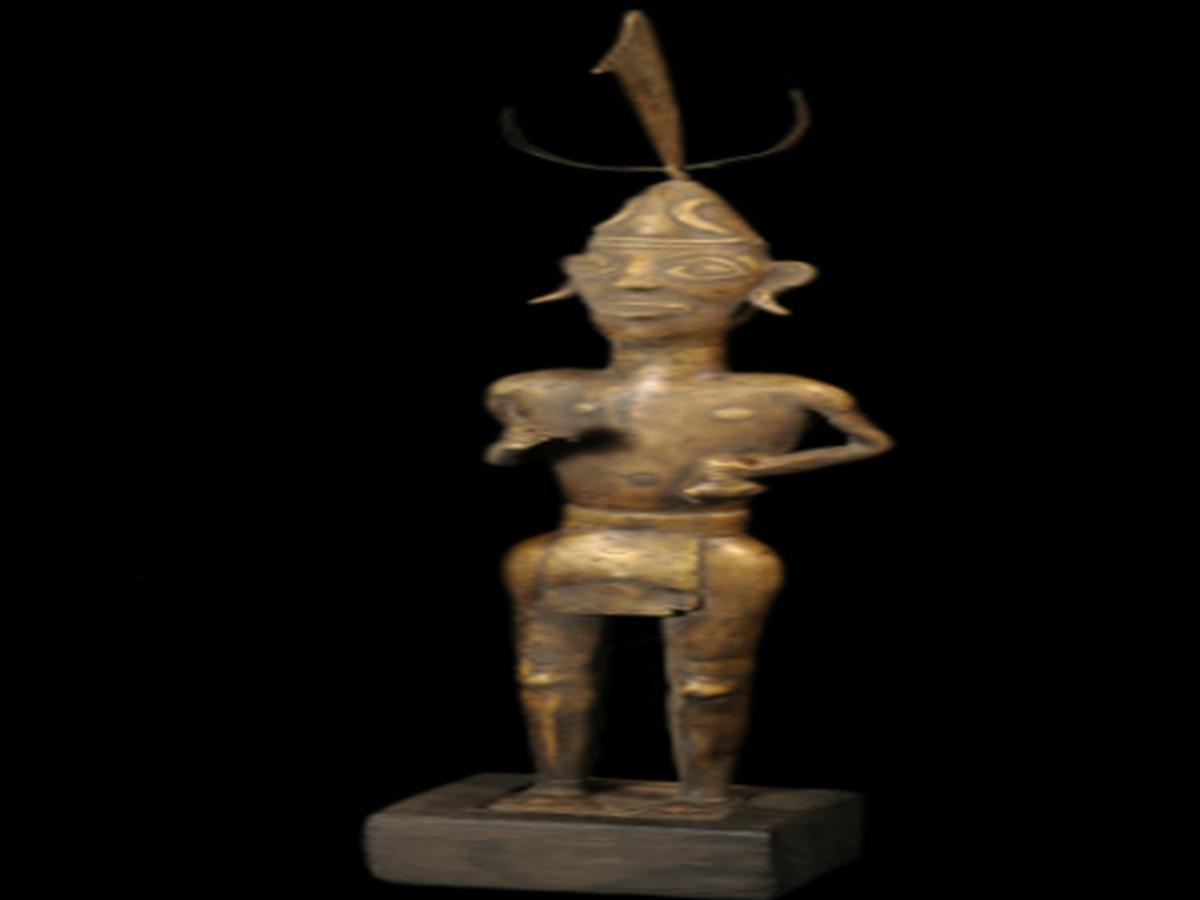State
Tribe Name
Art Type
short description
The male effigy is, thus, one of the grandest artifacts from Nagaland and adds weight to the view that this tribe of the Konyaks is one of the most culturally endowed and historically rich tribes of the Nagas in India, especially in the Mon district in Nagaland. The Konyaks are said to be very good warriors, known by tattooing, and the showpieces used on wood, bone, and metal are symbols of their identity and heritage. The metal effigy represents a standing male figure on a wooden base that represents strength and warrior spirit. The left hand seems to be holding a severed human head, which is a symbol of times past and referencing the age-old tradition of headhunting still performed by the Konyaks. This headhunting was carried out not only for honor and glory of the village but also for blessing the village in fertility. Though this headhunting is no longer practiced, the imagery still carries to a large extent deep ritual and cultural significance.
Thumbnail

Filter Postion
Left
Filter Background
Off
Theme
Filter Header Image

content
Image

description
The male effigy is, thus, one of the grandest artifacts from Nagaland and adds weight to the view that this tribe of the Konyaks is one of the most culturally endowed and historically rich tribes of the Nagas in India, especially in the Mon district in Nagaland. The Konyaks are said to be very good warriors, known by tattooing, and the showpieces used on wood, bone, and metal are symbols of their identity and heritage. The metal effigy represents a standing male figure on a wooden base that represents strength and warrior spirit. The left hand seems to be holding a severed human head, which is a symbol of times past and referencing the age-old tradition of headhunting still performed by the Konyaks. This headhunting was carried out not only for honor and glory of the village but also for blessing the village in fertility. Though this headhunting is no longer practiced, the imagery still carries to a large extent deep ritual and cultural significance
Image Mode
landscape
Image

description
Special about this effigy is the crown-like headdress, which consists of three long hanging detachable elements. Such worked pieces were probably representations of ceremonially or warlike status, interlocking fit into the top of the head. The detachable character of these crown pieces implies that they were used in rituals, being attached or removed during a ceremony or festival. Such effigies serve as images of ancestors or commemorative figures, kept by an ethnic group in morungs (men's houses) or village places, thus forming part of their memory and pride. This particular object in the possession of the Indian Museum, Kolkata, reflects what Konyak Naga memory and identity have meant till date
Image Mode
landscape
promoted
On
Verified
Off
